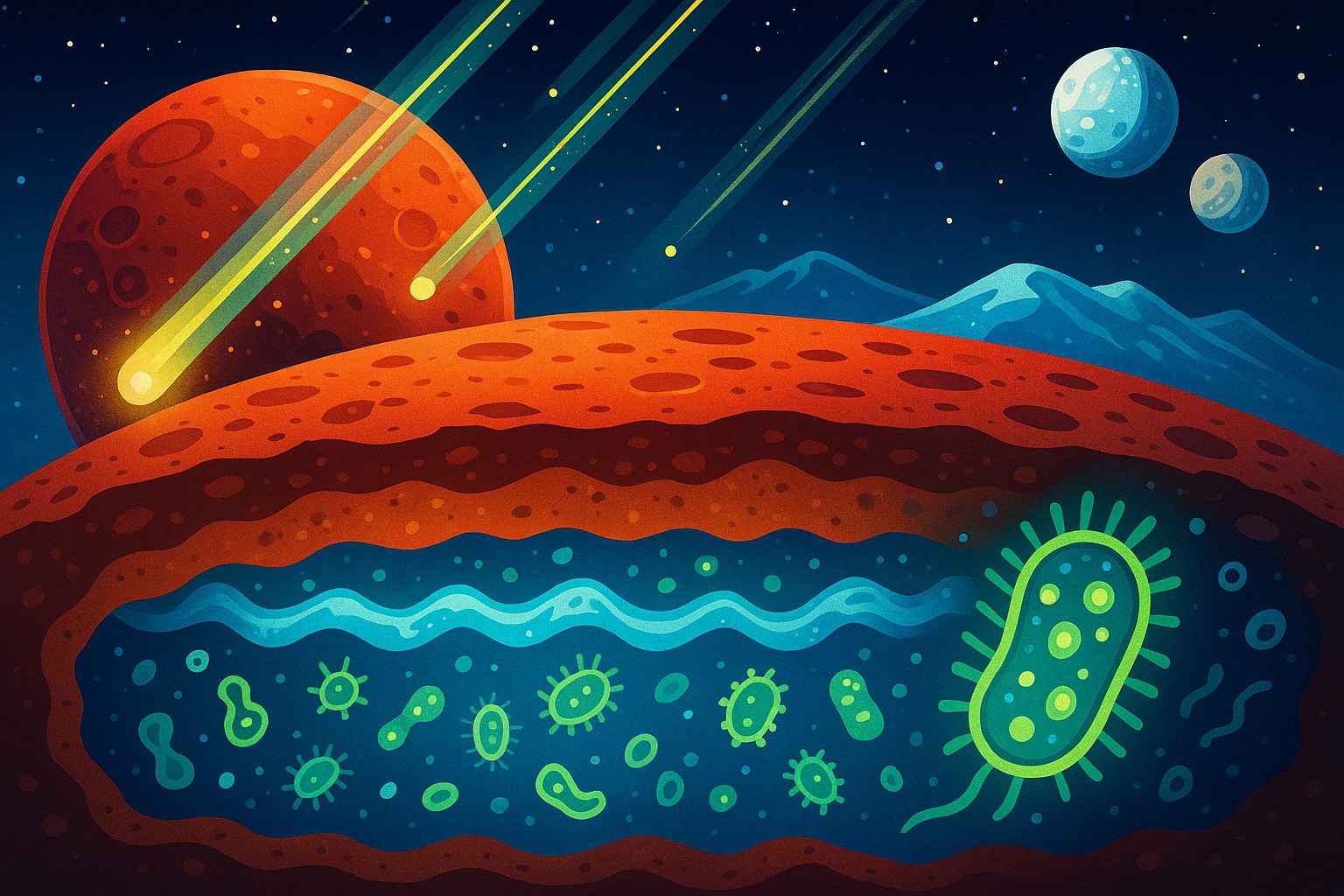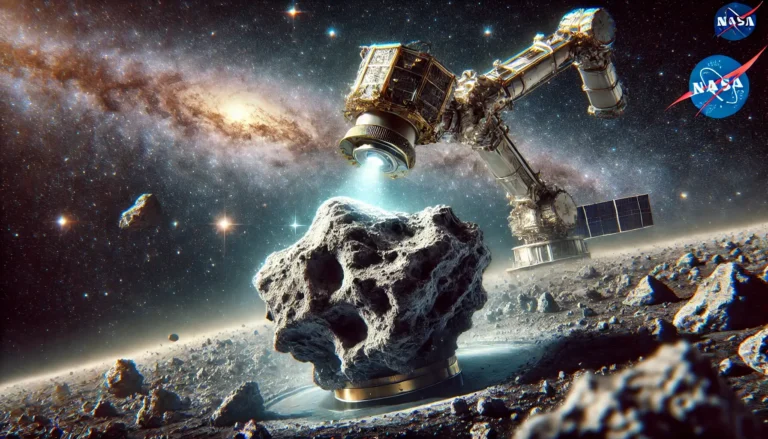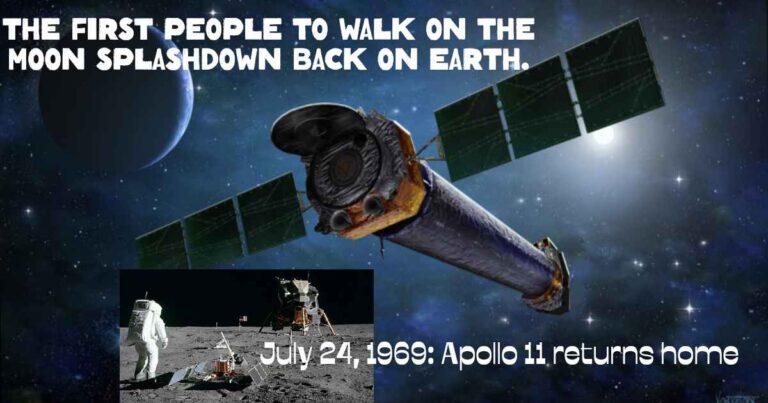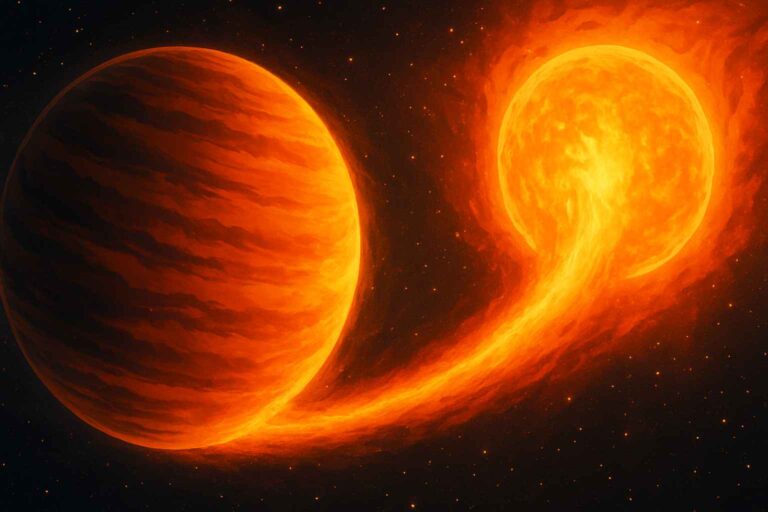
Hey curious explorers! 🧑🚀
What if I told you that life might be hiding deep underground on Mars… in the dark… without sunlight… powered by space rays?! Sounds like a sci-fi movie, right? But it’s real science—and scientists just made a super cool discovery that could change how we search for aliens! 👽
🚀 The BIG Discovery: Life Without Sunlight? Yes!
Scientists from New York University Abu Dhabi were wondering:
“Could anything live on cold, dark planets and moons where the Sun doesn’t shine?”
And guess what? Their answer is… Yes, maybe! 😲
They studied cosmic rays—these are tiny, super-speedy particles zooming through space from far-off stars and explosions. When these rays crash into underground water or ice, they can create something magical:
✨ Energy!
💥 Wait, How Does That Work?
Let’s break it down, kid-style:
- Cosmic rays hit underground ice or water
- Zap! They break water molecules apart
- That releases tiny particles called electrons
- Some teeny-tiny microbes (called bacteria) could use those electrons for energy—just like we use food, or like plants use sunlight! 🌱
This energy-making trick is called radiolysis (say it like: ray-dee-OL-uh-sis). And it means life might not need sunlight at all!
🌍 Where Could This Work?
Scientists used computer models to test this theory on three cool space places:
- Enceladus – A moon of Saturn, covered in thick ice
- Mars – Our red neighbor planet
- Europa – An icy moon of Jupiter
Their results? 🧊
💫 Enceladus is the top spot! It has the best chance for life powered by cosmic rays.
🔴 Mars comes second
🌕 Europa is third
🧠 A New Way to Search for Life
We used to think life could only exist in the “Goldilocks Zone”—not too hot, not too cold, just the right distance from the Sun 🌞 so water could stay liquid on the surface.
But now, there’s a new zone in town: the
🥶 Radiolytic Habitable Zone
This means life might survive underground, where it’s dark and cold—but still has ice, water, and cosmic rays!
🧪 So, What’s Next?
Future space missions might dig underground instead of just looking on the surface. Scientists will search for special chemicals and signs of energy that cosmic rays could be making deep below.
Imagine one day discovering a tiny alien microbe hiding in the icy tunnels of Mars! 🛸 Wouldn’t that be wild?
🤯 Did You Know?
🌀 Enceladus shoots icy water into space through cracks called tiger stripes! Scientists think that means there’s a liquid ocean beneath the ice.
🔬 Some bacteria on Earth live deep underground in caves or inside rocks—without any sunlight at all!
🌌 Cosmic rays travel at nearly the speed of light and can come from exploding stars called supernovae.
🧠 FUN QUIZ TIME!
Let’s see what you remember from our Martian mystery:
- What creates energy underground when cosmic rays hit water or ice?
A) Wind
B) Radiolysis
C) Sunlight - Which moon had the most potential for underground life in this study?
A) Europa
B) Enceladus
C) The Moon - What is the new life zone scientists are talking about?
A) Solar Zone
B) Radiolytic Habitable Zone
C) Dark Matter Zone
(Answers at the bottom!)
🌠 Final Thought
So next time you look up at the stars, just imagine… somewhere out there, maybe deep underground on a cold moon, something tiny might be alive—all thanks to space rays!
Science is full of surprises. Keep asking questions, keep exploring, and who knows? Maybe YOU will be the one to discover alien life someday!
✅ Quiz Answers:
1 – B) Radiolysis
2 – B) Enceladus
3 – B) Radiolytic Habitable Zone






